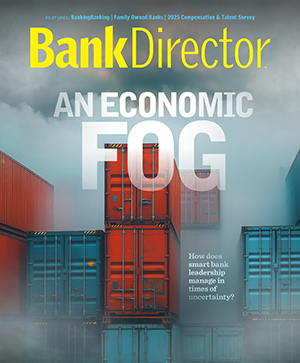As Director of Research at Janney Montgomery Scott, Chris Marinac oversees the firm’s Equity Research team, which covers more than 225 companies within the Financials, Healthcare, Infrastructure, and Real Estate sectors. The team aims to provide first class research on companies and the industry at large—which means staying ahead of the curve, understanding investors, and considering how events today will affect the future. Chris has more than 27 years of financial services and research analysis experience. Prior to joining Janney in 2019, he was Co-Founder and Director of Research at FIG Partners LLC, a premier investment banking and research firm specializing in community banks. At FIG, he established and managed an award-winning Equity Research team that covered more than 150 banks, thrifts, and REITs. Earlier in his career, he spent six years as Managing Director at SunTrust Robinson Humphrey and five years as a Research Analyst at Wachovia Corporation (formerly Interstate/Johnson Lane Inc.).

Rising Bankruptcies Are a Warning Sign for Banks
There is a strong correlation between rising business bankruptcy filings and commercial loan write offs.
Brought to you by Janney Montgomery Scott LLC

After examining bankruptcy filings and commercial loan losses at banks for more than a decade, it’s safe to say that financial institutions should be preparing for a worsening of credit quality.
The research team at Janney Montgomery Scott examined quarterly credit statistics at banks with $2 billion to $50 billion in assets from the first quarter of 2007 to the first quarter of this year. This included looking at owner-occupied and non-owner occupied commercial real estate and commercial and industrial loans, with operating cash flow as collateral. We then matched that up with business bankruptcy filings.
Overall, the credit metrics remained fairly strong. The average C&I loss rate for the first quarter of 2025 was 0.50%, down from 0.69% in 2024. Overall, this figure averages 0.58% since 2007. The CRE charge off rate was also quite low at an average of 0.11% for non-owner-occupied properties. Since 2007, CRE loss rate averages 0.11%.
But perhaps most importantly, this research found that there was a strong correlation between CRE and C&I loss rates and business bankruptcy filings. Essentially, one variable — in this case business bankruptcies — are influencing a second variable — loan charge offs.
We found that roughly 90% of the time business bankruptcy filings meant an increase in owner-occupied CRE write offs. We found similar results for non-owner-occupied CRE loans, though there was a moderately lower relationship between these two variables over the past five years. And the correlation between C&I loans and bankruptcy filings was lower during the 2007-08 financial crisis and from 2012 to 2019.
During the early 2000s, bankruptcy filings were over 1 million each year and bottomed near 620,000 in 2006, then jumped to 1.6 million in 2010, staying above 1 million until 2015 when the new normal was 800,000 per year. Covid-19 cut total bankruptcy filings down to 400,000, but now, filings are trending upward, back to 600,000 in 2025 and are likely to move up further next year. While these filing are a long way from the Great Financial Crisis of 2007-08, this incremental rise matters and should drive new C&I losses for banks. Our math suggests that another 15% in new bankruptcies should drive at least 12% more C&I losses in aggregate dollars. This is why investors and bankers should be aware of this important relationship analysis.
We conclude that rising bankruptcy filings should be a warning sign for higher commercial loan losses even if the C&I relationship has proved weak in recent years. CRE loan write offs, especially for owner-occupied property loans, have proven quite consistently to have a very strong relationship with bankruptcy filings — both business and total filings. C&I loss rates do not vary as much, largely due to the underlying collateral. C&I problems may exhibit a low frequency rate, and the C&I loss severity is significantly greater than CRE when a loss occurs.


